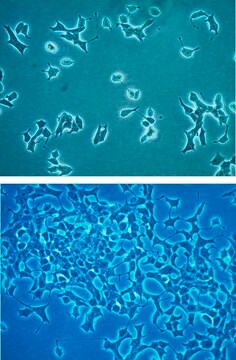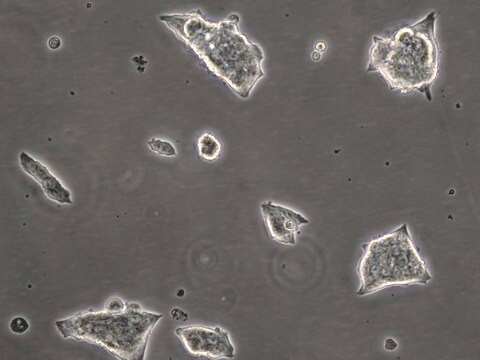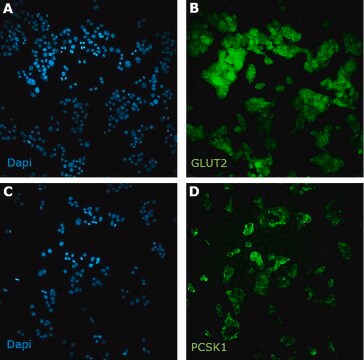SCC207
INS-1 832/13 Rat Insulinoma Cell Line
Rat
Sinónimos:
INS1 832/13, INS-1 (832/13), INS 832/13, 832/13, 832/13 INS-1
About This Item
Productos recomendados
Nombre del producto
INS-1 832/13 Rat Insulinoma Cell Line, INS-1 832/13 rat insulinoma cell line is a useful model for insulin secretion regulation and pancreatic islet beta-cell function studies.
biological source
rat
technique(s)
cell culture | mammalian: suitable
shipped in
ambient
General description
Cell Line Description
Application
Metabolism
Diabetes
Quality
• Cells are tested negative for infectious diseases by a Mouse/Rat Comprehensive CLEAR panel by Charles River Animal Diagnostic Services.
• Cells are verified to be of rat origin and negative for inter-species contamination from mouse, chinese hamster, Golden Syrian hamster, human and non-human primate (NHP) as assessed by a Contamination CLEAR panel by Charles River Animal Diagnostic Services.
• Cells are negative for mycoplasma contamination.
Storage and Stability
Disclaimer
Unless otherwise stated in our catalog or other company documentation accompanying the product(s), our products are intended for research use only and are not to be used for any other purpose, which includes but is not limited to, unauthorized commercial uses, in vitro diagnostic uses, ex vivo or in vivo therapeutic uses or any type of consumption or application to humans or animals.
Storage Class
12 - Non Combustible Liquids
wgk_germany
WGK 1
flash_point_f
Not applicable
flash_point_c
Not applicable
Certificados de análisis (COA)
Busque Certificados de análisis (COA) introduciendo el número de lote del producto. Los números de lote se encuentran en la etiqueta del producto después de las palabras «Lot» o «Batch»
¿Ya tiene este producto?
Encuentre la documentación para los productos que ha comprado recientemente en la Biblioteca de documentos.
Nuestro equipo de científicos tiene experiencia en todas las áreas de investigación: Ciencias de la vida, Ciencia de los materiales, Síntesis química, Cromatografía, Analítica y muchas otras.
Póngase en contacto con el Servicio técnico








